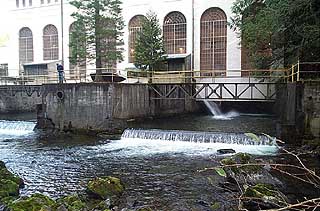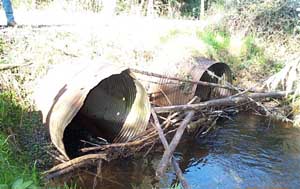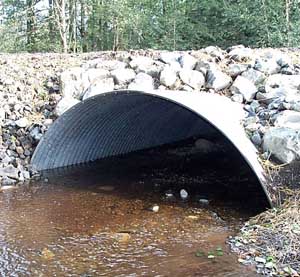
Chinook Engineering
Specialty: Civil and applied engineering for fisheries
Principal/owner: Jay Kidder
2000 revenues: $300,000
Projected 2001 revenues: $300,000
Location: Coupeville

Photo courtesy Chinook Engineering |
Revenues for Chinook Engineering doubled in 2000 from the year before — and so did the size of the staff. Chinook picked up a new employee — civil engineer Ken Cachelin — to handle an increasing workload of projects in the areas of fish passage and habitat restoration.
“We telecommute,” said Jay Kidder, Chinook principal and owner. Kidder works from his office in Coupeville, while Cachelin maintains a “branch office” out of his home in Lynnwood. “It works well.”
Cachelin has worked independently in fisheries engineering since 1995, adding his experience to the firm in the areas of project management, planning and design for fish passage and fish habitat restoration projects.
Kidder, himself a fisheries biologist and civil engineer, continues to provide consultant services for multipurpose dam projects — which allow for the passage of both fish and boats — as well as consulting on culvert replacement and hatcheries. Chinook is providing fisheries engineering and consultation services to the Sierra Pacific Power Co. on the replacement of the Farad Dam on the Truckee River near Reno, Nev. The dam was destroyed by flooding in 1996 and 1997, and the new dam is designed to allow for fish — and kayak — passage.

Photo courtesy Chinook Engineering |

Photo courtesy Chinook Engineering |
Chinook recently entered into a contract with the U.S. Forest Service to manage culvert replacement in southeast Alaska. “We tend to be doing a lot of stream crossings and culvert replacements,” said Kidder. “They range from forest roads to a lot of highways and major roads.”
The firm is also working with Seattle City Light to improve fish protection at the Cedar Falls Power House. Chinook created a computer model to evaluate the powerhouse tailrace water surfaces. The information was used to assist in the design of a barrier to protect fish entering the plant’s turbine tailrace.
Kidder said the firm spends much of its time consulting on facility renovations and improvements on hatcheries for Indian tribes. “A lot of our bread-and-butter work is helping tribes,” he said.
Lately, Kidder said he has seen an increased acceptance of the use of hatcheries and supplementation programs in fish restoration, a change from the sentiment of the past 10 to 15 years. “It’s now being realized that in order to preserve some of the gene pool, if that’s our goal, then hatcheries have some favorable attributes,” he said. “There is a place for a well-managed hatchery in supplementing fish stocks.”